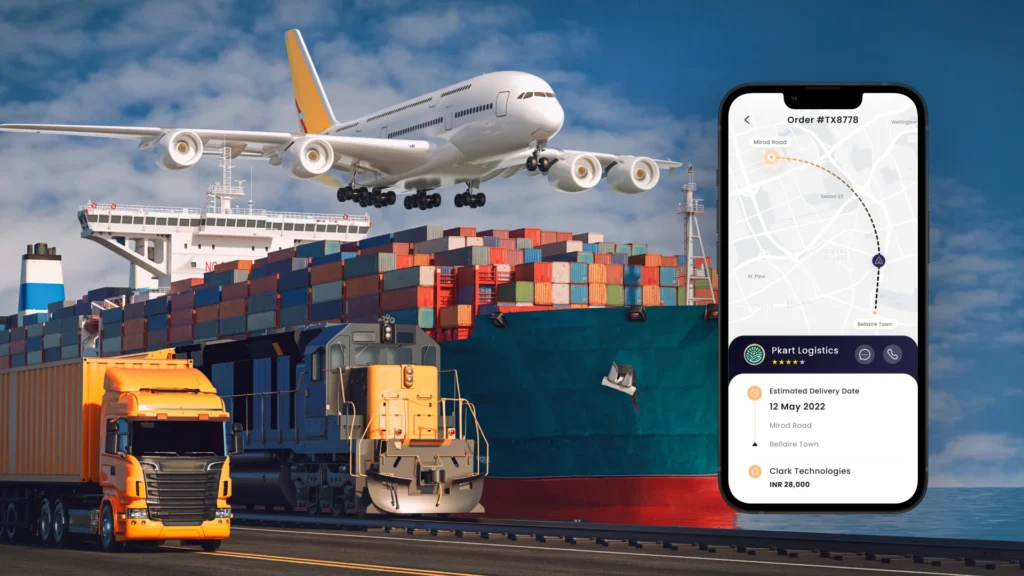Mobile trade and logistics refer to the use of mobile technology to manage the buying and selling of products as well as how those products are delivered and stored. In today’s world most people have smartphones and tablets making it easier for businesses to connect with their customers. This connection is very important because it allows companies to sell their products more quickly and efficiently. Mobile trade and logistics are changing how businesses operate by allowing them to reach more people and manage their inventory better.
When we talk about managing delivery and inventory we mean keeping track of what products are in stock and how they are sent to customers. With mobile technology businesses can check their inventory from anywhere. For example if a store runs low on a popular item they can quickly order more from their supplier. This way they do not run out of products that customers want. Overall mobile trade and logistics help businesses work smarter and make sure customers are happy with their purchases.
The Importance of Delivery Management
Delivery management is a crucial part of mobile trade and logistics. It involves planning how products get from the seller to the buyer in the quickest and most efficient way. Good delivery management means that products arrive on time and in perfect condition. When companies use mobile technology for delivery management they can track their shipments in real-time. This means they know exactly where a package is at any moment which helps them provide better service to their customers.
Moreover when customers know when their items will arrive they feel more satisfied and are likely to shop again. Mobile trade and logistics allow businesses to send notifications to customers about their deliveries. These updates can tell customers when their package is out for delivery and when it has been dropped off at their doorstep. This level of communication builds trust and keeps customers coming back for more.
Inventory Management in the Mobile Era
Inventory management is all about keeping track of the products a business has. It’s like counting your toys to make sure you know which ones you still have and which ones you need to get. In mobile trade and logistics managing inventory has become easier than ever. Companies can use mobile apps to check their stock levels from anywhere which is super helpful. This means if a store has a lot of one toy and not enough of another they can adjust their orders right away.
Using mobile technology for inventory management also helps reduce waste. If a store knows that certain toys are not selling well they can stop ordering those items. This helps businesses save money and keep their inventory fresh. In mobile trade and logistics knowing what products are available and what needs to be reordered is key to success. It helps businesses meet customer needs quickly and efficiently.
Technological Innovations Shaping Mobile Trade
Technology is changing the way mobile trade and logistics work. Many new tools and apps make it easier for businesses to manage their delivery and inventory. For example some companies are using artificial intelligence (AI) to predict what products will sell best. This helps them stock up on popular items before they run out. Additionally mobile payments are becoming more popular. Customers can easily pay for their purchases using their smartphones making the shopping experience quick and easy.
Another innovation is the use of drones and robots for delivery. Some businesses are testing these technologies to see if they can deliver products faster and more efficiently. Imagine ordering a toy and having it delivered to your door by a drone! These technological advancements make mobile trade and logistics even more exciting. They allow companies to explore new ways to reach their customers and manage their deliveries.
Challenges in Managing Mobile Trade Logistics
While mobile trade and logistics bring many benefits there are also challenges that businesses must face. One major challenge is keeping up with customer expectations. People today want fast delivery and easy access to products. If a company cannot deliver on time customers may become unhappy and choose to shop somewhere else. Businesses need to work hard to meet these demands to stay competitive in the market.
Another challenge is technology itself. As mobile trade grows companies must ensure their systems are up-to-date and secure. Cybersecurity threats can put customer information at risk so businesses need to protect their data. This means investing in the right tools and training employees to use them. Overall managing mobile trade logistics involves overcoming these challenges to keep customers satisfied and ensure smooth operations.
Best Practices for Effective Mobile Delivery and Inventory Management
To succeed in mobile trade and logistics businesses can follow some best practices. One important practice is to maintain clear communication with customers. Providing regular updates about delivery status and inventory levels can help build trust. For instance if a customer knows their toy is on its way they will feel more confident in their purchase. Good communication also helps reduce the number of questions and complaints that a business may receive.
Another best practice is to use analytics to track sales and inventory trends. Businesses can use this information to make smarter decisions about what products to stock and when to reorder. For example if a certain toy sells well during the holidays a store should prepare by ordering more ahead of time. By being proactive companies can ensure they have the right products available when customers want them. This approach keeps customers happy and improves overall sales.
Future Trends in Mobile Trade and Logistics
As technology continues to evolve mobile trade and logistics will likely see many exciting changes. One trend is the increased use of augmented reality (AR). This technology can help customers visualize products before they buy them. For example a customer could see how a toy looks in their living room using AR. This feature makes shopping more fun and interactive leading to better customer experiences.
Another future trend is the growth of sustainable practices in mobile trade and logistics. More companies are focusing on eco-friendly packaging and delivery methods. This means using materials that are good for the planet and finding ways to reduce carbon footprints during deliveries. Customers today care about the environment so businesses that adopt sustainable practices will attract more shoppers. Overall the future of mobile trade and logistics is bright with many new ideas on the horizon.
Conclusion
Mobile trade and logistics managing delivery and inventory is essential for businesses today. As companies continue to adapt to new technologies they can provide better service and meet customer expectations. By focusing on effective delivery management, smart inventory practices and clear communication businesses can thrive in the mobile trade landscape.
Ultimately staying informed about trends and overcoming challenges will help companies remain competitive. The journey of mobile trade and logistics is exciting and those who embrace it will lead the way in shaping the future of shopping. Whether it’s through innovative technology or customer-focused strategies the possibilities are endless in this ever-evolving field.



